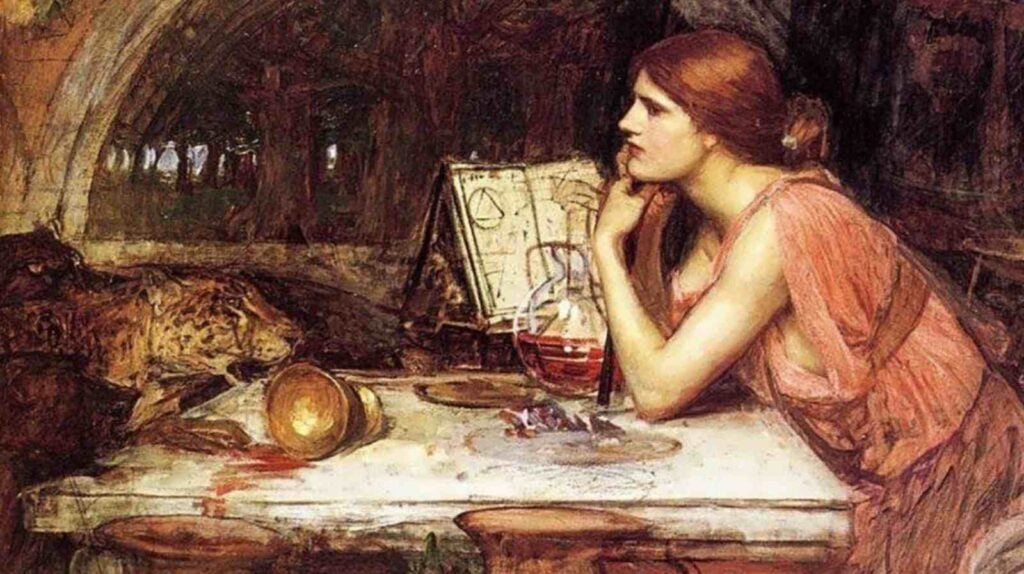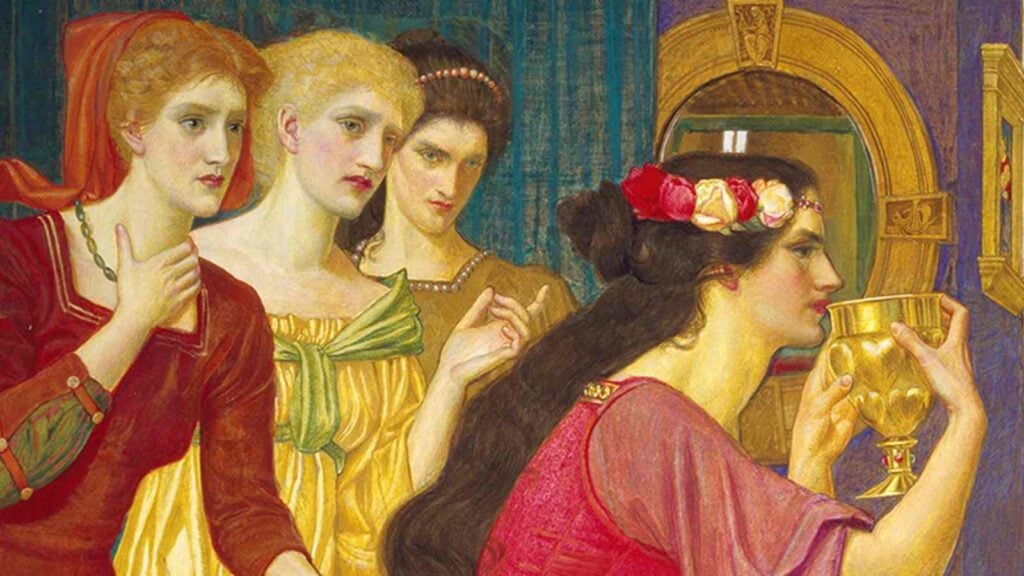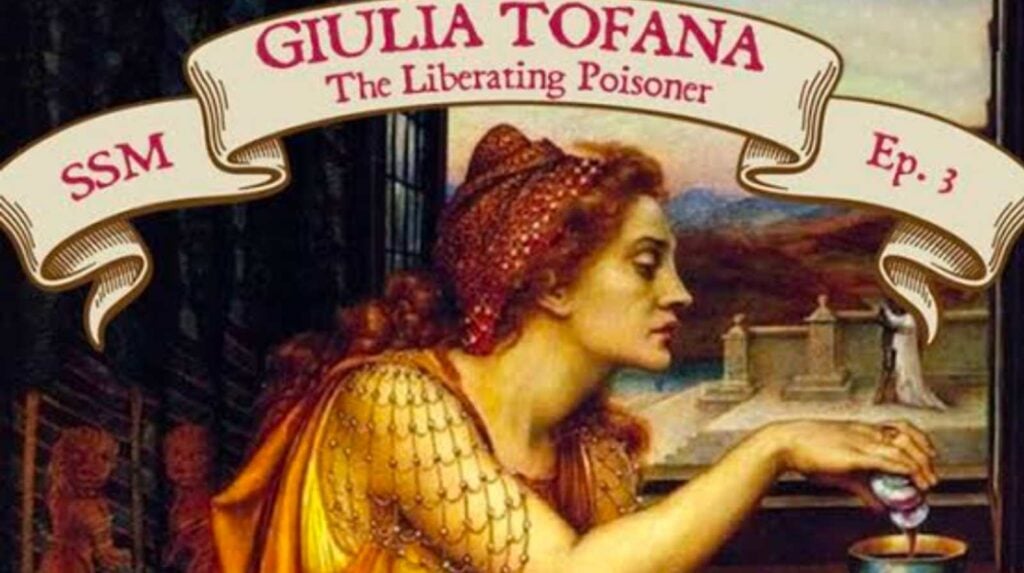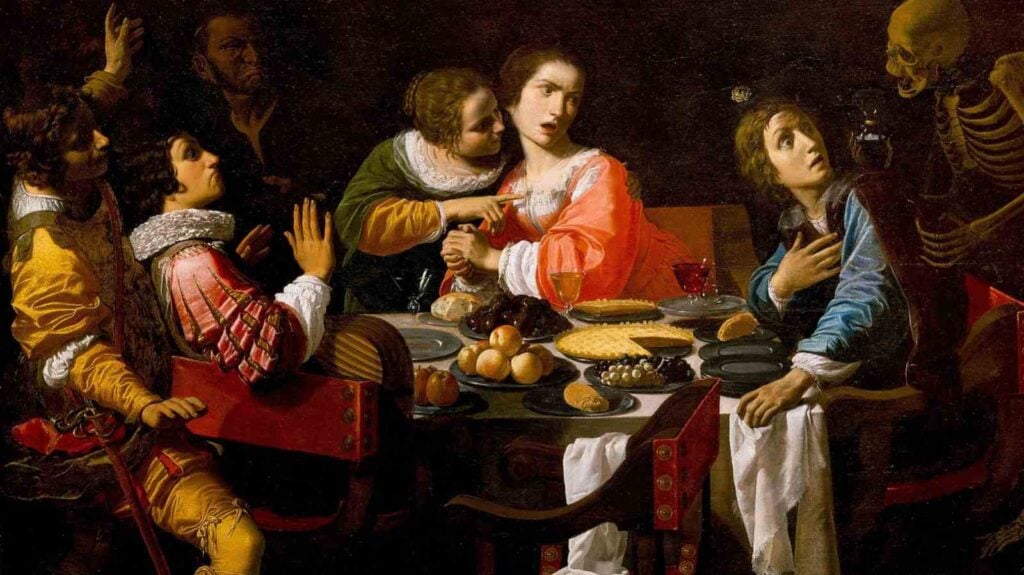Imagine living in a time when women had no rights, and abusive marriages were an inescapable prison. Divorce? Independence? Not a chance. This was the grim reality for many women in 17th-century Italy. It was then Giulia Tofana emerged as a woman who turned the tables in the most unexpected way. Her weapon of choice? Makeup. But this wasn’t any ordinary makeup.
For many women, Giulia Tofana’s name came to represent independence. Her clever invention, Aqua Tofana, was a toxin that was passed off as a cosmetic. It offered women a covert and practical way to free themselves from their abusers. Here’s all about the groundbreaking marvel.
The “Magical” Underworld Of 17th-Century Rome

In a society where women were practically auctioned off into abusive marriages, it’s not surprising that some found escape in less-than-legal methods. Giulia Tofana’s business wasn’t just born out of personal ambition, but from an entire underground world of alchemists and apothecaries who thrived in places like Rome.
The “criminal magical underworld” offered services that the church or legal authorities wouldn’t touch — like abortions and poisons. In fact, Europe had a bit of a poisoning problem in the 1600s.
Related: Who Was Mata Hari, The Exotic Dancer Executed For Being A Spy?
Over in Versailles, King Louis XIV’s court was dealing with a series of murders by poisoning in a scandal now known as the ‘Affair of the Poisons‘. Tofana’s Italian counterparts were no different, and she took full advantage of the demand, cleverly branding her poison as ‘Aqua Tofana‘ – a harmless beauty product.
Aqua Tofana: The Ultimate Beauty Hack For Murder

Giulia Tofana’s poison wasn’t just lethal, it was brilliantly disguised, packaged in a bottle labeled ‘Manna of St Nicholas of Bari,’ a popular healing oil at the time. Her concoction could easily blend in with a woman’s everyday beauty routine.
Tofana’s customers, basically unhappy wives, were instructed to give their husbands 4 to 6 drops of the colorless, tasteless liquid. The poison was so subtle that it killed gradually, mimicking a natural illness.
In case you missed it: Top 10 Serial Killer Movies Of All Time
First, the victim would feel weak and tired. Then, they would suffer from stomach issues and vomiting. By the third dose, the husband would usually get his affairs in order (which meant making sure his soon-to-be widow was taken care of). And with the final dose, well, let’s just say he wasn’t coming back for dinner.
According to Chambers’s Journal in 1890, “To save her fair fame, the wife would demand a post-mortem examination. Result, nothing — except that the woman was able to pose as a slandered innocent.” And guess what? If she remarried within a year or two, no one could blame her. How convenient!
The Downfall Of The Poison Queen

So, how did Giulia Tofana finally get caught? Ironically, it was a bowl of soup that brought her empire crashing down. In 1650, one of her customers had second thoughts and begged her husband not to eat the soup she had just laced with Aqua Tofana. The husband got suspicious and forced his wife to confess, which led to Tofana’s arrest.
Despite fleeing to a church for sanctuary, rumors suggest that she had poisoned the local water supply which led to her being dragged out and arrested. After intense torture, Giulia confessed to her crimes, admitting that she had been responsible for killing upto 600 men!
She was executed in 1659, along with her daughter and several accomplices. But the legend of Giulia Tofana lived on.
Some even believe that her poison was involved in the mysterious death of composer Wolfgang Amadeus Mozart. He allegedly said, “I am sure that I have been poisoned… Someone has given me Aqua Tofana.” While most historians agree that Mozart didn’t die from Tofana’s mixture, it certainly adds to her eerie legacy.
Giulia Tofana’s Terrifying Yet Glorious Legacy

Though Aqua Tofana’s exact recipe was never recorded, historians believe it contained a mix of arsenic, lead, and belladonna, a fitting ingredient for a femme fatale. Belladonna, or “deadly nightshade,” was used in cosmetics throughout the 17th century.
It made the poison’s beauty-related disguise even more appropriate. Fun fact: ‘Belladonna‘ literally means “beautiful woman,” but in Tofana’s case, a more accurate translation would probably be “deadly woman.”
Related: How ‘Baby Reindeer’ Tackles Toxic Masculinity And Relationships
Fast forward to today, and Giulia Tofana’s tale resonates with many modern women. Tofana’s acts show the extent women have to go to in order to obtain their freedom, even at a period when independence and divorce are no longer unreachable goals. She is viewed as a hero, a ray of light for those who had no other option than to remain in a patriarchal culture.





